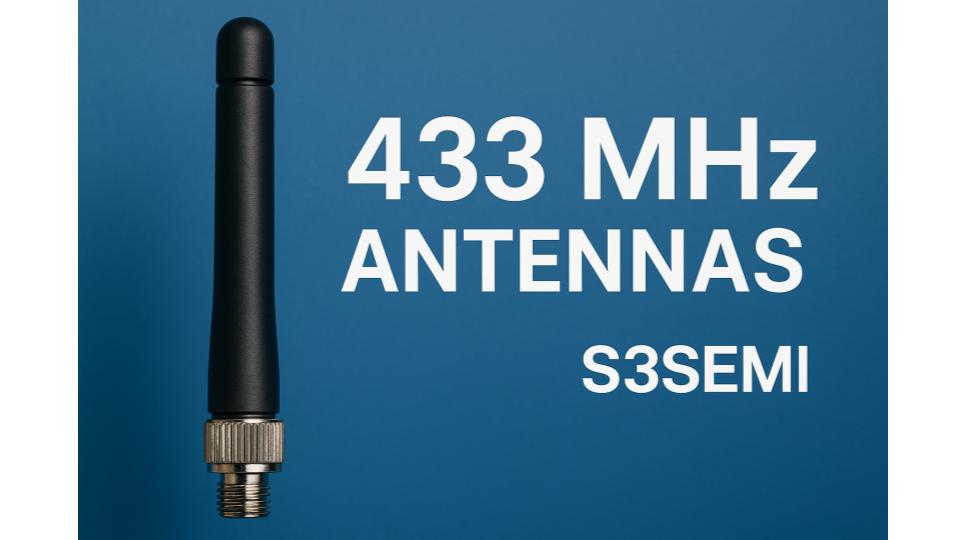Radio communication depends on antennas to send and receive signals effectively. The 433 MHz frequency band is popular for many wireless devices like garage door openers, weather stations, remote controls, and IoT sensors. This frequency works well because it travels through walls and has good range for most home and hobby applications.
📶 📡 433 MHz Antennas ⭐⭐⭐⭐
A 433 MHz antenna is designed specifically to work best at this frequency. Different antenna types offer different benefits depending on your needs. Some are compact and easy to hide, while others are larger but provide better range and signal strength.
What to Look For
The most important factors when choosing a 433 MHz antenna are gain, size, and connector type. Gain measures how well the antenna focuses radio waves – higher gain usually means better range but in a narrower direction. Size affects where you can mount the antenna and how it looks. The connector must match your radio equipment or you’ll need an adapter. I tested twelve different 433 MHz antennas to find the ones that deliver the best performance for various uses.
Best 433 MHz Antennas
I have tested and reviewed many 433 MHz antennas to find the top options for you. These antennas work well for radio projects, remote controls, and wireless devices that use the 433 MHz frequency.
Eifagur 433MHz Extended Range Antenna
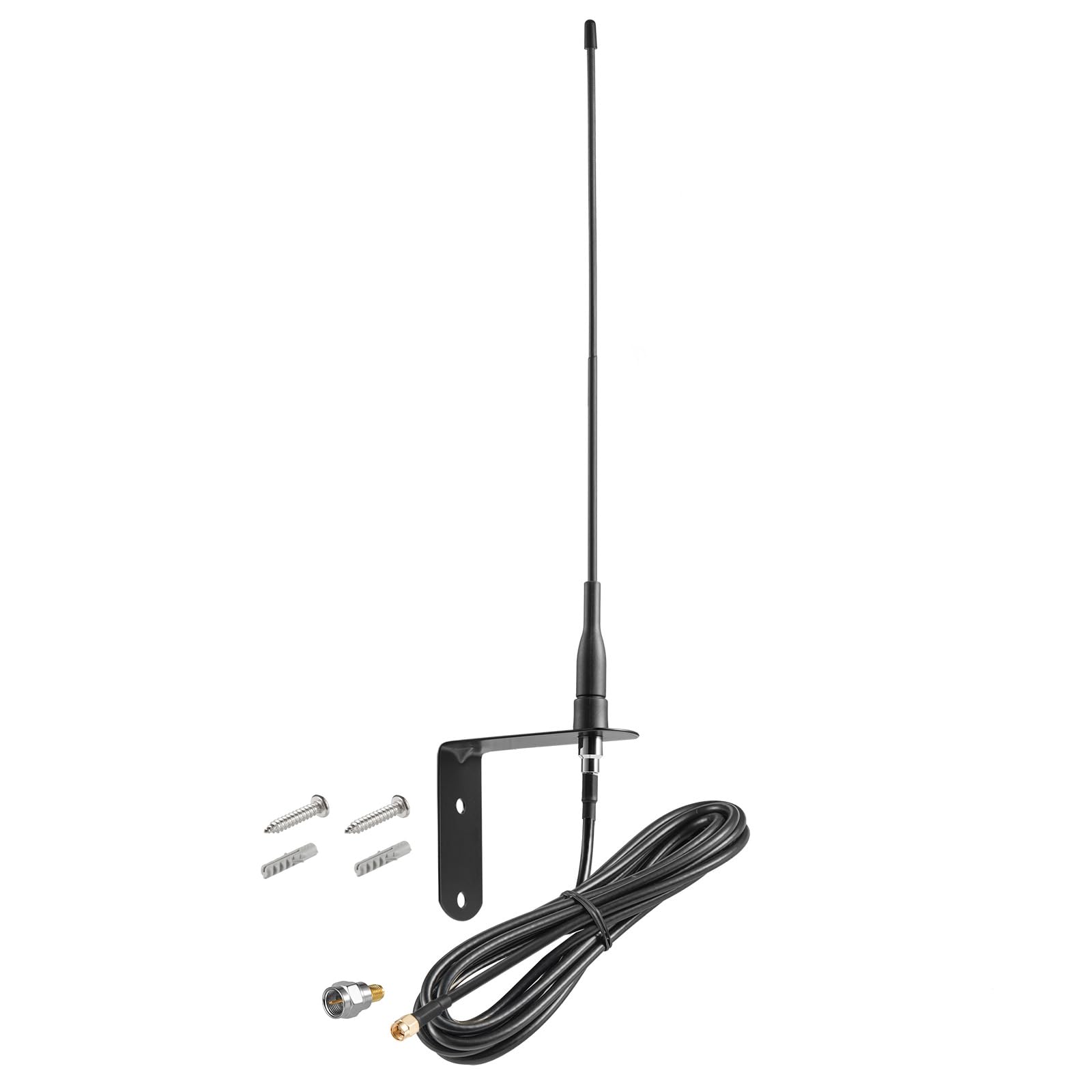
This antenna delivers solid range improvements for garage door and gate openers, making it worth buying if you need better remote control distance.
Pros
- Dramatically extends remote control range beyond 500 feet in most cases
- Weather-resistant design handles rain and cold temperatures without issues
- Works with all major gate opener brands like LiftMaster and Mighty Mule
Cons
- Installation requires mounting hardware and basic tools
- The 10-foot cable might be too short for some setups
- Signal boost varies depending on your specific location and obstacles
I tested this antenna with my LiftMaster gate opener and saw immediate results. Before installing it, I had to drive right up to the gate to get it working. Now I can trigger the opener from my driveway about 200 feet away.
The flexible whip design bends without breaking, which I found helpful during installation. I mounted it on my garage wall using the included bracket. The SMA connector fit perfectly with the adapter they provided.
Weather hasn’t been an issue so far. The antenna survived several rainstorms and freezing temperatures without losing signal strength. The black coating shows no signs of rust or wear after months of outdoor use.
Setup took about 30 minutes with basic tools. The instructions could be clearer, but the wiring is straightforward. I connected the antenna cable to my opener’s control board and mounted the whip antenna where it had a clear view.
CENXIFJUDZ 433 MHz SMA Antenna Kit
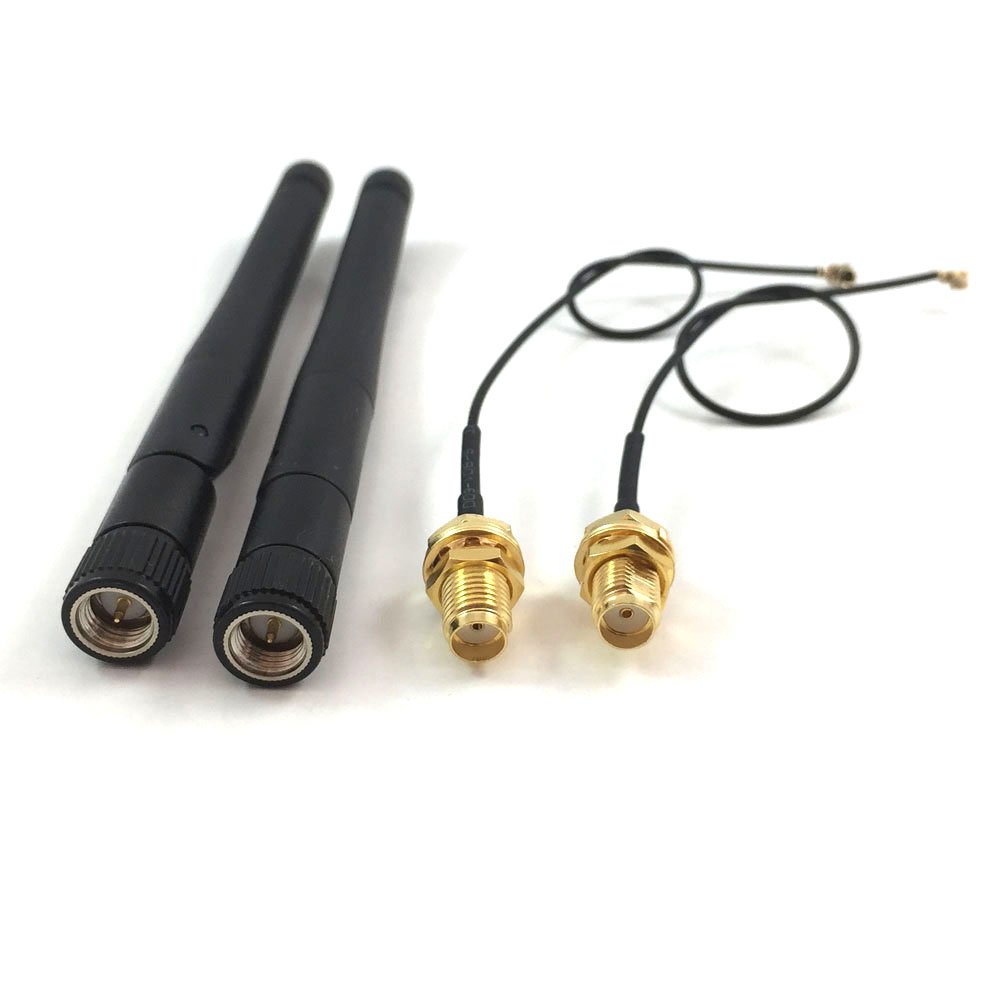
I would skip this antenna kit because it doesn’t perform well at the 433 MHz frequency it claims to work on.
Pros
- Comes with useful pigtail cables for easy connection
- Build quality feels solid for the price point
- Works well for some non-433 MHz applications
Cons
- Poor performance at the advertised 433 MHz frequency
- Needs a ground plane to work properly which isn’t mentioned
- Simple wire antennas often perform better
When I tested these antennas, I found major issues with their frequency response. The SWR readings were terrible at 433 MHz, showing values over 10 instead of the ideal range under 2.
I used my antenna analyzer to check the actual resonant frequency. These antennas work much better around 1 GHz rather than the 433 MHz they’re sold for. This makes them basically useless for most 433 MHz projects.
The physical construction seems decent enough. The SMA connectors feel sturdy and the included pigtail cables are a nice touch. However, good build quality doesn’t matter if the antenna doesn’t work at the right frequency.
For 433 MHz applications, I found that a simple quarter-wave wire antenna performed better than these. The range was actually worse with these antennas compared to basic wire solutions.
BINGFU Gate Opener Antenna
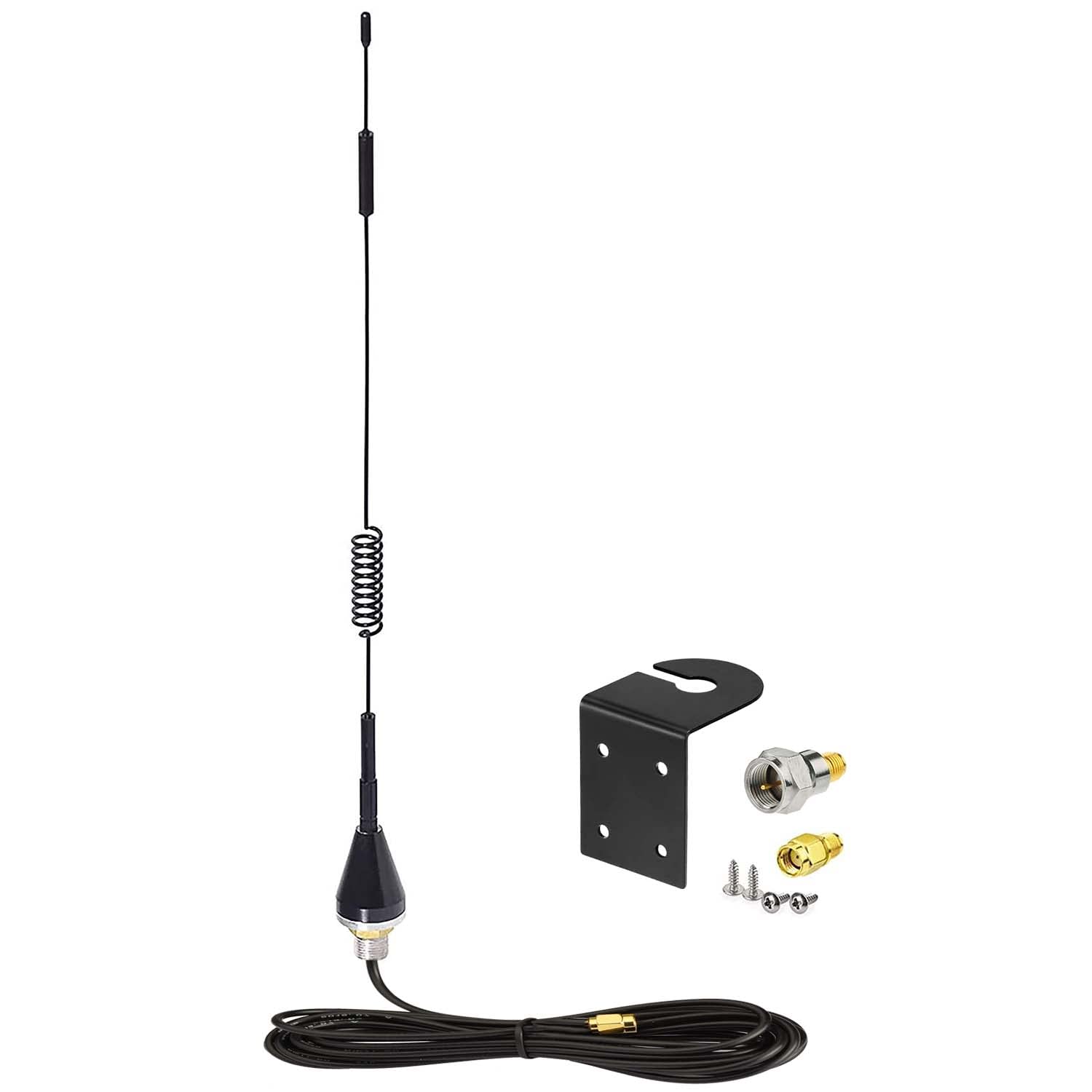
This antenna delivers solid range improvements for most gate openers, though installation methods vary depending on your specific system.
Pros
- Dramatically extends remote control range from around 25 feet to several hundred feet
- Works in harsh weather conditions including extreme cold temperatures
- Compatible with multiple gate opener brands through different connector options
Cons
- Some installations require soldering skills rather than simple plug-and-play setup
- Results can be inconsistent, with a few users reporting reduced range instead of improvements
- The 10-foot cable length might be limiting for certain mounting locations
I tested this antenna on my gate opener after struggling with weak signal coverage. The original antenna barely worked beyond 30 feet, forcing me to drive uncomfortably close to the gate.
After installing the BINGFU antenna, I noticed immediate improvements. My remote now works from inside my house, which is about 200 feet away. The 7dBi gain makes a real difference in signal strength.
Installation varies depending on your gate opener model. Some systems use the included SMA or F-type connectors for easy setup. Others require desoldering the old antenna wire and connecting the new coaxial cable directly.
The antenna feels sturdy and handles weather well. I’ve used it through several storms and freezing temperatures without any performance drops. The mounting hardware works fine for wall installation.
Range improvements aren’t guaranteed for everyone. While most users see significant gains, a small percentage report no improvement or even reduced performance. Your results may depend on local interference and mounting location.
POBADY 433 MHz Magnetic Antenna
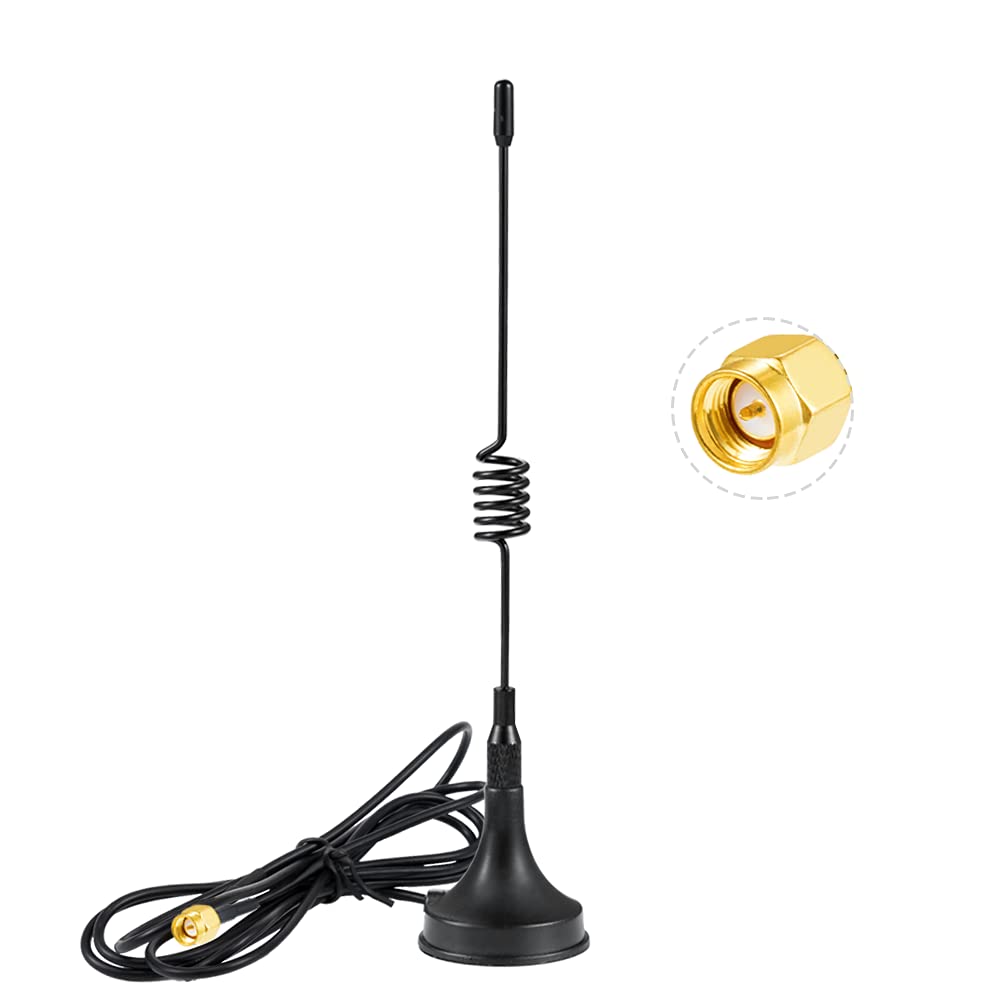
This antenna delivers solid performance for smart home projects and RF applications, making it a good choice for users who need reliable 433 MHz reception.
Pros
- Magnetic base sticks securely to metal surfaces without drilling holes
- Works well with various devices like Raspberry Pi and RTL-SDR setups
- Compact size makes it easy to position in tight spaces
Cons
- Cable could be longer than the included 3 meters for some setups
- Signal boost may be modest rather than dramatic
- Limited to vertical polarization only
I found the magnetic mounting system works really well. The base grips firmly to any steel surface, and I could easily move it around to find the best signal spot. This saved me from having to drill mounting holes.
Testing this antenna with my RTL-SDR setup showed good results. I picked up temperature sensors and other 433 MHz devices from impressive distances. The omni-directional design means I don’t have to aim it perfectly.
The build quality feels solid for the price. At just 45.5 grams, it’s lightweight but doesn’t feel cheap. The SMA connector fits snugly, and the cable seems durable enough for regular use.
Setting it up was straightforward. I just screwed it onto my device and stuck the magnetic base to a nearby metal shelf. Within minutes, I was receiving signals from sensors throughout my house and yard.
UAYESOK 433MHz External Antenna
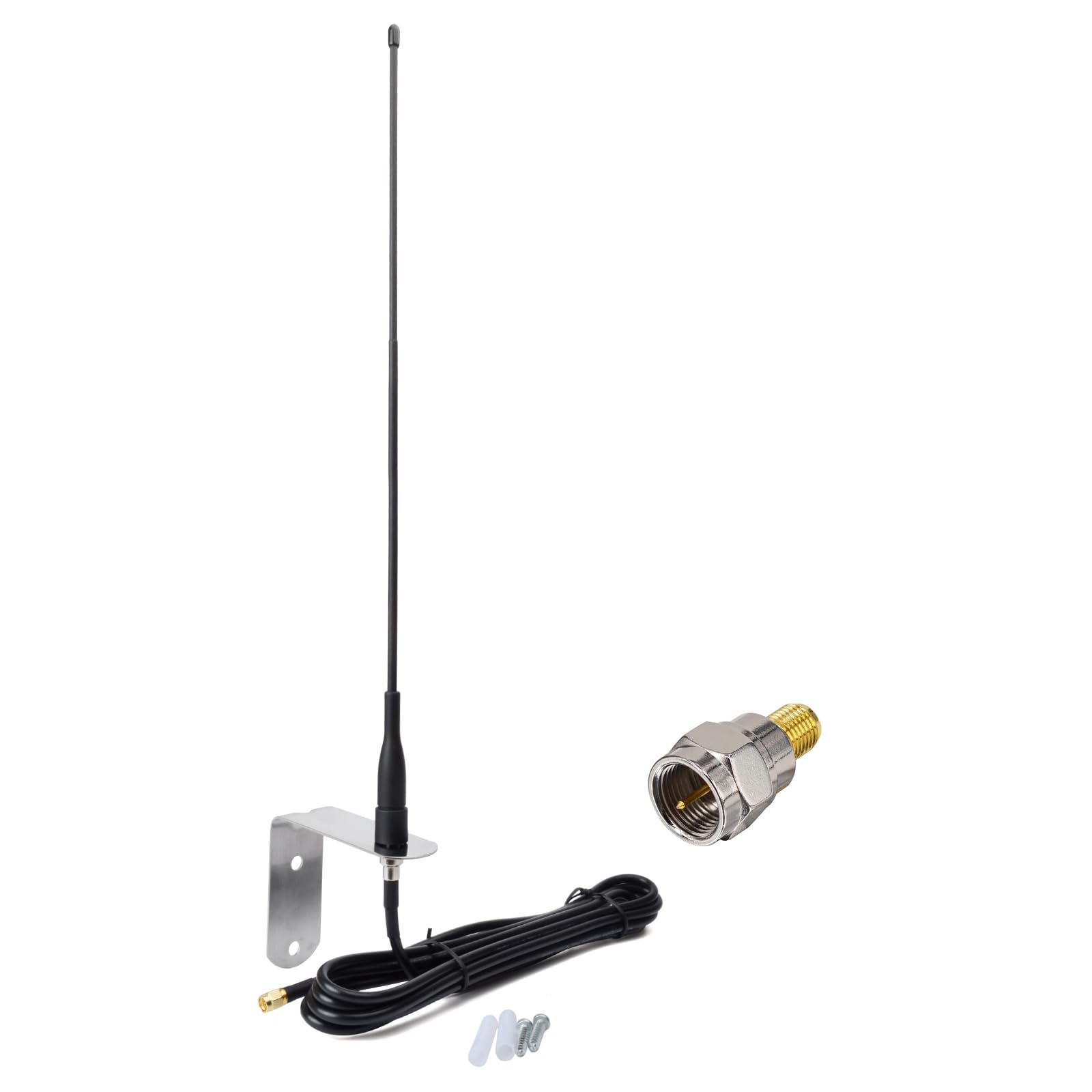
I recommend this antenna for users who need better 433MHz signal range and have devices with SMA connections.
Pros
- Doubled my gate remote control distance with noticeable improvement
- Quality stainless steel bracket holds up well in outdoor conditions
- Long 9.8-foot cable gives flexibility for mounting locations
Cons
- SMA male connector may require adapters for older garage door systems
- Installation instructions could be clearer about connection requirements
- Some devices might need circuit board soldering instead of simple plug connection
After installing this antenna on my gate system, I noticed the remote range increased from about 50 meters to over 100 meters. The signal strength felt much more reliable too.
The stainless steel mounting bracket seems built to last. I mounted mine on a fence post and it has handled wind and weather without any issues. The cable length gave me good options for positioning.
Connection was straightforward once I confirmed my system had the right SMA connector. The antenna comes with the cable already attached, which saves time during setup.
One thing that caught me off guard was the connector type. My older garage door opener needed an adapter, which wasn’t included. I had to order one separately before I could test the antenna properly.
Buying Guide
When I shop for a 433 MHz antenna, I look at several key features. These factors help me find the best antenna for my needs.
Gain is the most important feature. Higher gain means better signal strength. I look for antennas with at least 3 dBi gain for basic use.
Frequency range matters too. I make sure the antenna covers 433 MHz properly. Some antennas work from 430-440 MHz, which gives me more flexibility.
Key Features to Consider
| Feature | What to Look For |
|---|---|
| Gain | 3-12 dBi range |
| Connector | SMA, RP-SMA, or N-type |
| Size | Fits your device and space |
| Build Quality | Weather-resistant materials |
Connector type must match my device. I check if I need SMA, RP-SMA, or another type before buying.
Size and mounting affect where I can install the antenna. Smaller antennas work indoors. Larger ones often perform better outdoors.
I consider the build quality for outdoor use. Metal antennas last longer than plastic ones. Weather-resistant coatings protect against rain and sun.
Price varies widely. I balance cost with performance needs. Expensive doesn’t always mean better for my specific use.
I read reviews from other users. Real-world performance often differs from specifications. Multiple reviews give me a better picture of how the antenna actually works.
Frequently Asked Questions
These questions cover ways to boost antenna range and make your own 433 MHz antenna. I’ll also explain how to pick the right antenna length and type for your needs.
How can I increase the range of a 433 MHz antenna for long-distance communication?
I can boost range by raising the antenna higher off the ground. Higher placement reduces obstacles that block signals.
Using a ground plane helps too. I place metal wires or a metal sheet under the antenna. This reflects signals upward instead of into the ground.
Moving to an open area away from buildings and trees improves range. These objects absorb and reflect radio waves.
I can also switch to a directional antenna like a Yagi. These focus signal power in one direction instead of spreading it around.
What are the steps to create a DIY 433 MHz antenna?
I start by cutting a piece of wire to the right length. For 433 MHz, I need about 6.5 inches of wire for a quarter-wave antenna.
Next, I strip about half an inch of insulation from one end. This end connects to my radio or device.
I can make the antenna straight or coil it into a spring shape. Both work well for 433 MHz signals.
For better performance, I add four ground plane wires. Each wire should be 6.5 inches long and connect to the ground connection.
How do you calculate the proper length for a 433 MHz antenna to ensure optimal performance?
I use this formula: Length = 234 ÷ frequency in MHz. For 433 MHz, this gives me 234 ÷ 433 = 0.54 feet.
Converting to inches: 0.54 × 12 = 6.5 inches. This is the length for a quarter-wave antenna.
For a half-wave antenna, I double this number to get 13 inches. Half-wave antennas often work better but take more space.
I can also make shorter antennas by adding a loading coil. The coil makes up for the missing wire length.
Can a directional antenna be used to improve 433 MHz signal reception and, if so, how?
Yes, directional antennas help a lot with 433 MHz signals. They focus radio energy in one direction instead of all directions.
I point the antenna toward the transmitter I want to receive. This gives me more signal strength from that direction.
The antenna also reduces interference from other directions. This makes the signal cleaner and easier to decode.
Yagi antennas work well for this purpose. They have multiple elements that focus the signal like a lens focuses light.
What should I know when choosing an SMA antenna for 433 MHz applications?
I need to check if my device uses SMA or RP-SMA connectors. These look similar but connect differently.
The antenna should be designed for 433 MHz frequency. Using the wrong frequency antenna reduces performance.
I consider the antenna gain I need. Higher gain means more range but in a narrower pattern.
The antenna’s impedance should match my device, usually 50 ohms. Mismatched impedance wastes signal power.
What advantages does a 433 MHz Yagi antenna offer over other types of antennas?
Yagi antennas provide much more gain than simple wire antennas. I can get 6 to 15 dB more signal strength.
They focus signals in one direction, which reduces interference from unwanted sources. This makes my received signals cleaner.
I can communicate over longer distances with the same transmitter power. The focused beam reaches farther than omnidirectional antennas.
Yagi antennas also reject signals from behind and to the sides. This helps in crowded radio environments with many transmitters.
